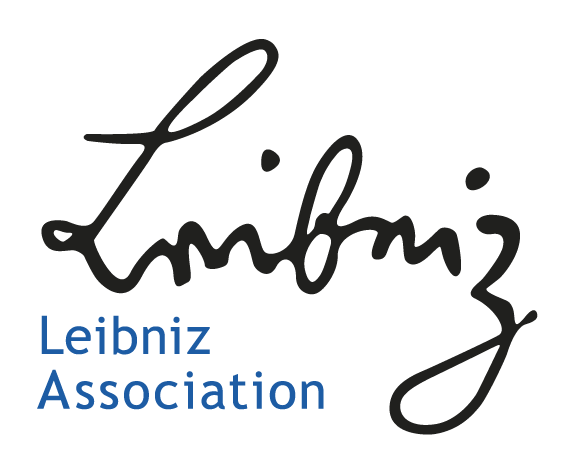Econometric Tools for Macroeconomic Forecasting and Simulation
The aim of this research group is to enhance research on, and development, implementation, evaluation, and application of quantitative macroeconometric models for forecasting and analysing aggregate economic fluctuations and developments. Research in this group contributes to the econometric foundation and the methodological improvements of the IWH forecasts. During the last years, the IWH has highly specialised in macroeconomic modelling, both for flash estimates and medium-term projections. Furthermore, this group conducts comprehensive empirical analysis and develops econometric tools that are used for third-party funded projects. In the last years, particular models have been developed for e.g. Volkswagen Financial Services AG and for GIZ. The research group contributed in particular on macroeconomic modelling for ministries in Kyrgyzstan and Tajikistan as well as for the institute of forecasting and macroeconomic research (IFMR) Uzbekistan.
IWH Data Project: IWH Real-time Database
Research Cluster
Economic Dynamics and StabilityYour contact

- Department Macroeconomics
EXTERNAL FUNDING
07.2022 ‐ 12.2026
Evaluation of the InvKG and the federal STARK programme
On behalf of the Federal Ministry of Economics and Climate Protection, the IWH and the RWI are evaluating the use of the approximately 40 billion euros the federal government is providing to support the coal phase-out regions..
01.2023 ‐ 12.2023
Early determination of stable results for gross domestic product or real economic growth and gross value added at federal state level
The project examines whether the accuracy of the first estimate of gross value added and gross domestic product for the federal states can be increased, thereby reducing the extent of subsequent revisions.
01.2018 ‐ 12.2023
EuropeAid (EU Framework Contract)
05.2020 ‐ 09.2023
ENTRANCES: Energy Transitions from Coal and Carbon: Effects on Societies
ENTRANCES aims at examining the effects of the coal phase-out in Europe. How does the phase-out transform society – and what can politics do about it?
This project has received funding from the European Union’s Horizon 2020 research and innovation programme under grant agreement No 883947.
10.2019 ‐ 01.2023
Climate Resilient Economic Development
Climate change has a substantial impact on economic growth and a country’s development. This increases the need for reliable and viable approaches to assessing the impact of climate risks and potential adaptation scenarios. Political decision-makers in ministries of planning and economy need sound forecasts in order to design and finance adequate economic policy instruments and actively to take countermeasures. In the pilot countries (Georgia, Kazakhstan and Vietnam), climate risk is included in macroeconomic modelling, enabling the results to be integrated into the policy process so as to facilitate adapted economic planning. The IWH team is responsible for macroeconomic modelling in Vietnam.
07.2016 ‐ 12.2018
Climate Protection and Coal Phaseout: Political Strategies and Measures up to 2030 and beyond
01.2017 ‐ 12.2017
Support to Sustainable Economic Development in Selected Regions of Uzbekistan
01.2017 ‐ 12.2017
Short-term Macroeconomic Forecasting Model in Ministry of Economic Development and Trade of Ukraine
01.2016 ‐ 12.2017
Development of analytical tools based on Input-Output table
The aim of the project was the development of an analytical tool to assess the gains and losses of possible state programs supporting the development of the private sector of the Tajik economy.
11.2015 ‐ 12.2016
Employment and Development in the Republic of Uzbekistan
Support to sustainable economic development in selected regions of Uzbekistan
05.2016 ‐ 05.2016
Framework and Finance for Private Sector Development in Tajikistan
02.2016 ‐ 04.2016
Macroeconomic Reforms and Green Growth - Assessment of economic modelling capacity in Vietnam
Refereed Publications

Inflation Expectations: Does the Market Beat Professional Forecasts?
in: North American Journal of Economics and Finance, No. 3, 2011
Abstract
The present paper compares expected inflation to (econometric) inflation forecasts based on a number of forecasting techniques from the literature using a panel of ten industrialized countries during the period of 1988 to 2007. To capture expected inflation, we develop a recursive filtering algorithm which extracts unexpected inflation from real interest rate data, even in the presence of diverse risks and a potential Mundell-Tobin-effect. The extracted unexpected inflation is compared to the forecasting errors of ten econometric forecasts. Beside the standard AR(p) and ARMA(1,1) models, which are known to perform best on average, we also employ several Phillips curve based approaches, VAR, dynamic factor models and two simple model avering approaches.

Flow of Conjunctural Information and Forecast of Euro Area Economic Activity
in: Journal of Forecasting, No. 3, 2011
Abstract
Combining forecasts, we analyse the role of information flow in computing short-term forecasts up to one quarter ahead for the euro area GDP and its main components. A dataset of 114 monthly indicators is set up and simple bridge equations are estimated. The individual forecasts are then pooled, using different weighting schemes. To take into consideration the release calendar of each indicator, six forecasts are compiled successively during the quarter. We found that the sequencing of information determines the weight allocated to each block of indicators, especially when the first month of hard data becomes available. This conclusion extends the findings of the recent literature. Moreover, when combining forecasts, two weighting schemes are found to outperform the equal weighting scheme in almost all cases. Compared to an AR forecast, these improve by more than 40% the forecast performance for GDP in the current and next quarter.
Working Papers

Workplace Equipment and Workplace Gap by Gender in East and West Germany
in: IWH Discussion Papers, No. 9, 2006
Abstract
In dem vorliegenden Aufsatz werden (a) Umfang und Struktur der vorhandenen Arbeitsplätze nach Geschlechtern in Ost- und Westdeutschland, (b) das geschlechtsspezifische Ausmaß der „Arbeitplatzlücke“ in beiden Großregionen sowie (c) die Ursachen für die – gemessen an Westdeutschland – höhere „Arbeitsplatzlücke“ in Ostdeutschland auf der Grundlage von Daten der Regionalen Volkswirtschaftlichen Gesamtrechnungen und der Bundesgentur für Arbeit untersucht. Die Analyse zeigt, dass im Jahr 2003 die „Arbeitsplatzausstattung“ je 1000 Erwerbsfähigen in Ostdeutschland fast genau so hoch war wie in Westdeutschland. Bei den Frauen lag sie sogar über dem westdeutschen Vergleichswert. Dennoch ist die Diskrepanz zwischen dem Arbeitsangebot und der Nachfrage bei den ostdeutschen Frauen und Männern erheblich größer. Dies ist zum einen auf strukturelle Ursachen und zum anderen auf die höhere Erwerbsneigung der ostdeutschen Frauen zurückzuführen, die insbesonde durch das tradierte Verhaltensmuster nach Erwerbsarbeit sowie die geringeren Haushalteinkommen in Ostdeutschland bedingt ist.

















